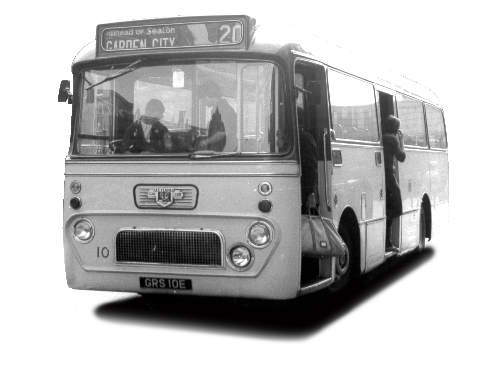The History
There was a change of Aberdeen Corporation Transport’s General Manager in 1963 and the new incumbent, Mr Tom Marsden from Barrow in Furness Corporation, set about controlling costs. In 1966 his intake of new vehicles included Aberdeen Corporation’s first Leyland’s in the fleet, a batch of six Leyland Tiger Cubs which were used in early 1966 to convert route 14 to one man operation (OMO) - there were no female bus drivers in Corporation days. The process of converting the whole network to OMO was now under way and a second batch of six Tiger Cubs came in mid-1967, including ACT 10.
The Tiger Cub was first produced in 1953 as Leyland’s lighter weight underfloor engined chassis for single deckers. It sold well and went through various technical upgrades until production ceased about 1969. The Aberdeen examples were Leyland designation PSUC1/13, having semi-automatic transmission, and had 43 seat Alexander bodywork with twin doors – enter at the front to pay the driver and leave through the centre door (“passenger flow”). They could also carry an additional 18 standing passengers and could be seen loaded to maximum capacity when used on route 20 between the two university colleges. The bodies were steel framed, were to the new maximum width of 8’2½” and were based on Alexander’s landmark “Y Type” design.
ACT 10 had a twelve year working life, being sold for further passenger use on Orkney which lasted until 1985 when it was abandoned. By then in a derelict state, it was acquired for preservation in 1998.

